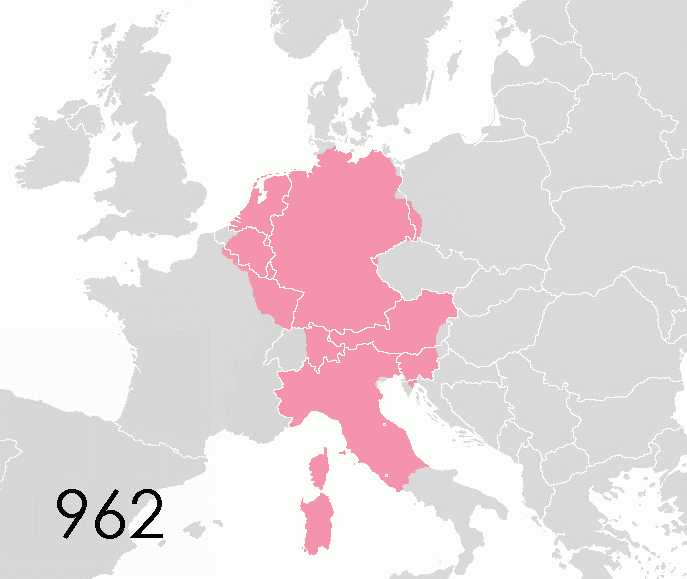Take a gander at this GIF that shows the swelling and falling of the Roman Empire...
510 BC to 530 AD
In 500 BC, Rome was a minor city-state on the Italian peninsula. By 200
BC, the Roman Republic had conquered Italy, and over the following two
centuries it conquered Greece and Spain, the North African coast, much
of the Middle East, modern-day France, and even the remote island of
Britain. In 27 BC, the republic became an empire, which endured for
another 400 years. Finally, the costs of holding such a vast area
together become too great. Rome gradually split into Eastern and Western
halves, and by 476 AD the Western half of the empire had been destroyed
by invasions from Germanic tribes. The Eastern half of the empire,
based in Constantinople, continued for many centuries after that.
Here is the shape of the next empire that followed, the one created by Charlemagne.
Historians generally refer to the Eastern Roman Empire after 476 as the
Byzantine Empire. But this is an arbitrary distinction invented for the
convenience of historians; it wouldn't have made sense to people living
in Constantinople, the Eastern Capital, at the time. People in the
Byzantine Empire continued to think of themselves as Romans, and their
empire as the Roman Empire, for centuries after 476. In 527, the Emperor
Justinian took power in the Byzantine Empire and began a compaign to
reconquer the Western half of the empire. By his death in 565, he had
made significant progress, retaking Italy, most of Roman Africa, and
even some parts of Spain. While his successors wouldn't be able to hold
these new territories, the Byzantine Empire would endure as a Christian
empire for another 1000 years until it was finally overrun by the Ottomans in 1453.
Read more here. . .


3 comments:
The history of the Roman Empire can be discussed dispassionately and we can view its' great achievements, and conquests, as well as the factors which led to its' rise and fall in a Wikipedia search. But my own view is that the Romans brought order along with enslavement and genocide, built roads and canals, but also built the Colliseum, a Madison Square Garden of horror and a killing ground.They introduced laws and rules of order, a caste system, a systematic plundering of weaker cultures, and its' legacy reflects both the best and worst elements of humanity.
The Roman empire grew wealthy by conquering and pillaging neighboring lands. They had no other way to sustain the empire.
no NOO
Post a Comment